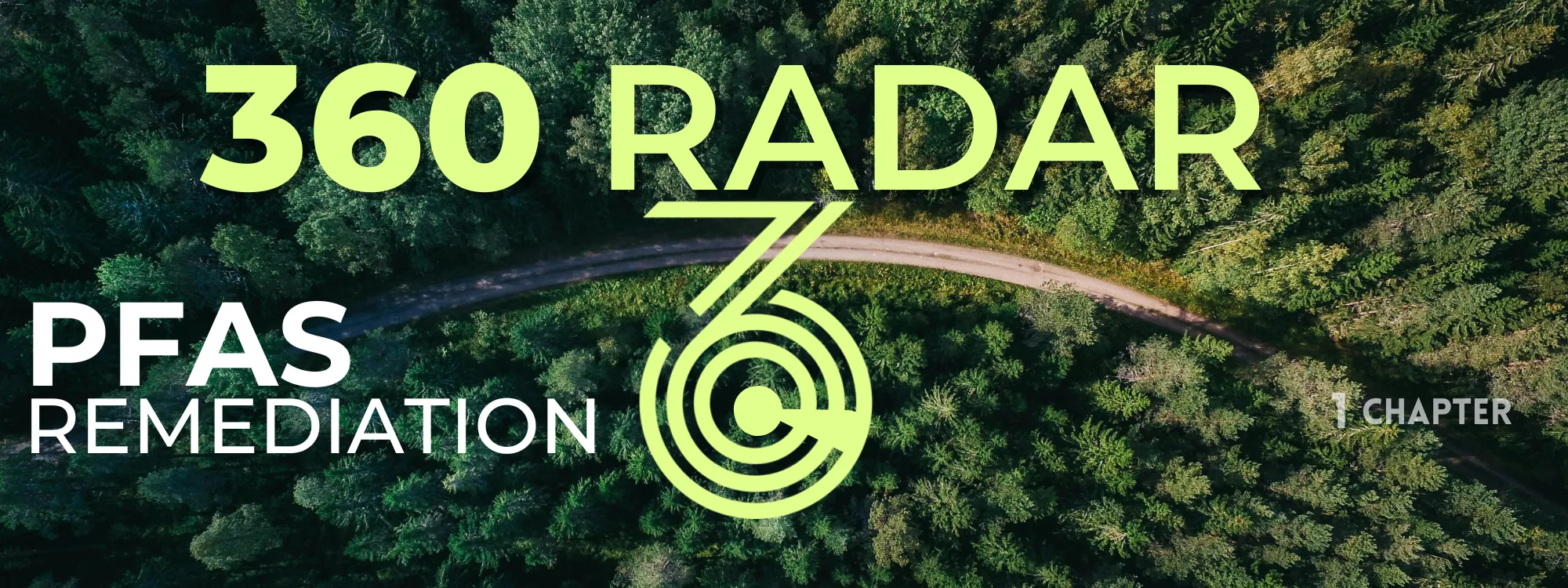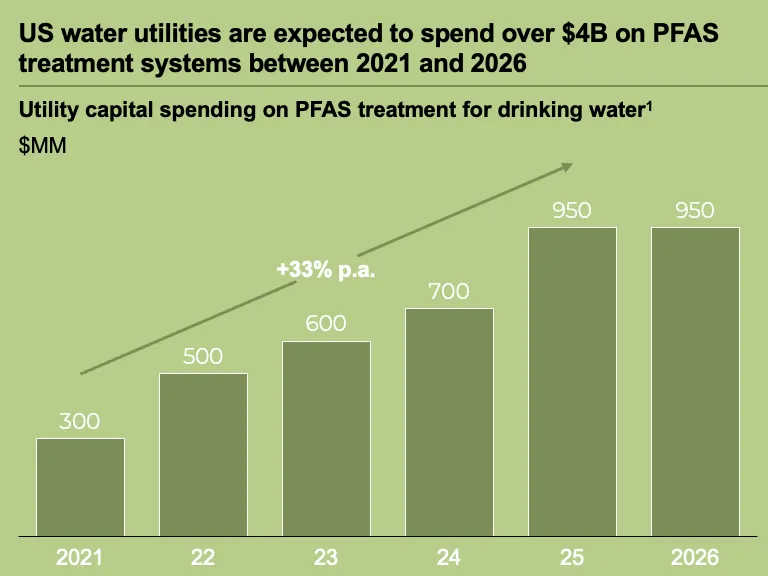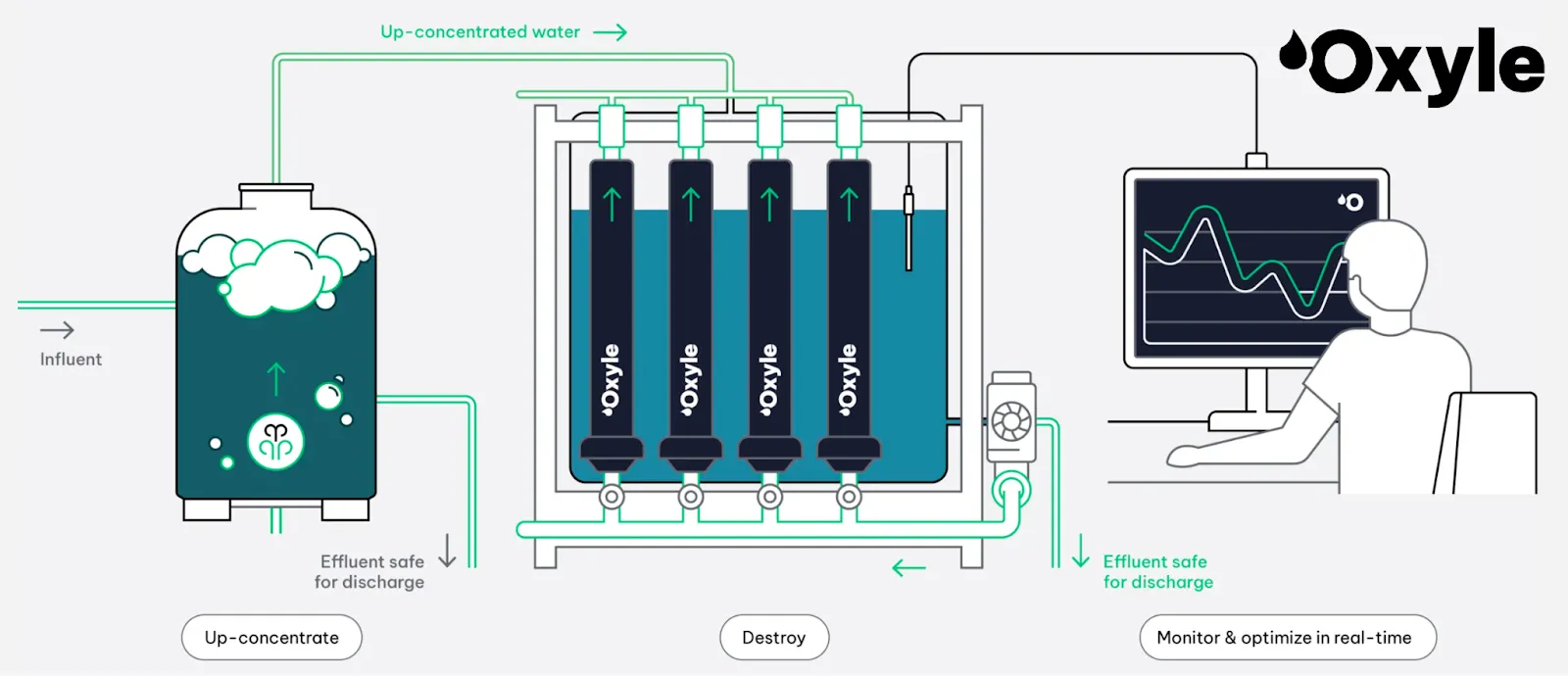

February 6, 2025
This is the first edition of 360RADAR, our new report series dedicated to exploring the most pressing challenges in Climate Tech. Each edition will provide deep insights into critical environmental issues.
PFAS (Per- and Polyfluoroalkyl Substances) are a large family of human-made chemicals that have been widely used in various industries since the 1950s. They are present in many everyday products, including:
PFAS are often referred to as "forever chemicals" because they do not break down easily in the environment or in the human body, leading to bioaccumulation over time. Their persistence has been linked to serious health risks, such as:
PFAS contamination is one of the most serious environmental challenges of our time, posing significant threats to human health, ecosystems, and economies. These synthetic chemicals—widely used in industrial and consumer applications—are alarmingly persistent, accumulating in soil, water, and living organisms, including humans. As a result, remediation efforts are not just necessary but increasingly urgent.
PFAS pollution has infiltrated water supplies, soils, and even the air. Due to their ability to spread through atmospheric processes, no region remains untouched. Rainwater across the globe now contains unsafe levels of PFAS, and contaminated sites require extensive cleanup to restore safe conditions. Groundwater contamination alone has rendered drinking water unsafe for millions of people worldwide, demanding immediate intervention.
The financial implications of PFAS pollution are staggering. Getting rid of all PFAS would cost an estimated €2 trillion over 20 years. The challenge is particularly severe for short-chain and ultrashort-chain PFAS, like trifluoroacetic acid (TFA), which are highly mobile and can easily enter the cells of living organisms. These molecules are so small that they bypass most existing water filtration systems. Removing short-chain and ultrashort-chain PFAS from the environment and destroying them would require an annual investment of around €100 billion, totaling over €2,000,000,000,000 in two decades (Source).The Growing Need for RegulationDue to their resilience, omnipresence, and health risks, global efforts to regulate and reduce PFAS use are accelerating. Countries are at different stages in their regulatory approaches:

The U.S. PFAS water treatment market is expected to grow steadily through 2026, with spending peaking as utilities achieve compliance.

The EU has introduced strict regulations to limit PFAS usage in industrial and municipal applications. Key regulations include:

At 360 Capital, we look for breakthrough early-stage technologies that tackle major global challenges with scalable solutions. PFAS contamination is an urgent environmental and health crisis—these chemicals are everywhere, from industrial wastewater to drinking water, and they don’t degrade naturally. With tightening regulations, industries urgently need effective solutions.Oxyle caught our attention because it doesn’t just filter out PFAS like existing technologies—it destroys them. This is a game-changer in the fight against PFAS pollution.
Most existing solutions—like activated carbon, ion exchange resins, and reverse osmosis—only capture PFAS, meaning contaminated waste still needs disposal. Oxyle’s technology achieves over 99% destruction of PFAS, including short- and medium-chain compounds that other treatments struggle with. This eliminates the problem at its source.Another key differentiator is energy efficiency. Many emerging PFAS destruction technologies require immense energy input. Oxyle operates at under 4.5 kWh/m³—significantly lower than competitors—making it a cost-effective and scalable solution for industries and municipalities.

As regulations tighten and awareness grows, PFAS treatment solutions will be increasingly critical for industries and municipalities worldwide. 360 Capital continues to invest in high-impact climate tech innovations, supporting startups like Oxyle that are reshaping the future of environmental protection.